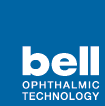Technology created by astronomers to study celestial bodies could help eye care professionals monitor the cell by cell progression of retinal disease. Adaptive optics were developed to compensate for the irregularities caused by turbulence in the earth’s atmosphere and the technique can measure and correct for the optical imperfections of the eye, as well.
The technology compensates for optical aberrations allowing any ophthalmoscope modality, including flood-illuminated fundus cameras, scanning laser ophthalmoscopes, and optical coherence tomography, to produce sharper images. It can yield new understanding of retinal diseases, and could be used to evaluate the effects of treatments on photoreceptors.
The sensor measures the aberrations introduced into light exiting the eye using an array of lenslets, where each lenslet samples a local portion of the incidence wavefront and focuses light on a charge-coupled device. Using software algorithms, a series of actuators deflect the surface of a deformable mirror to compensate for these aberrations so light exits the surface of the mirror in parallel planes.
With adaptive optics, scanning laser ophthalmoscopes can distinguish features as small as 2 µm, making individual cones within a mosaic readily visible.
